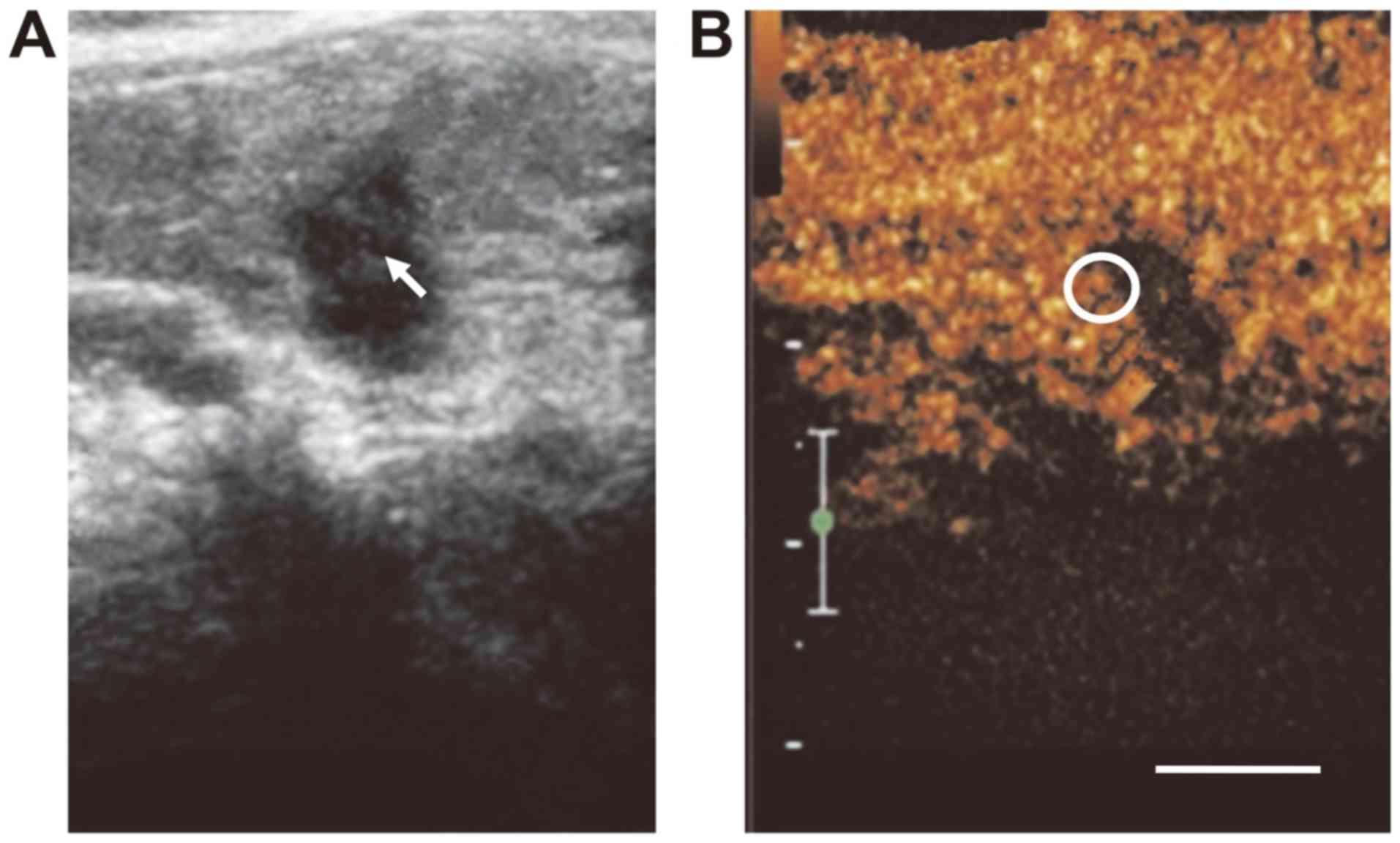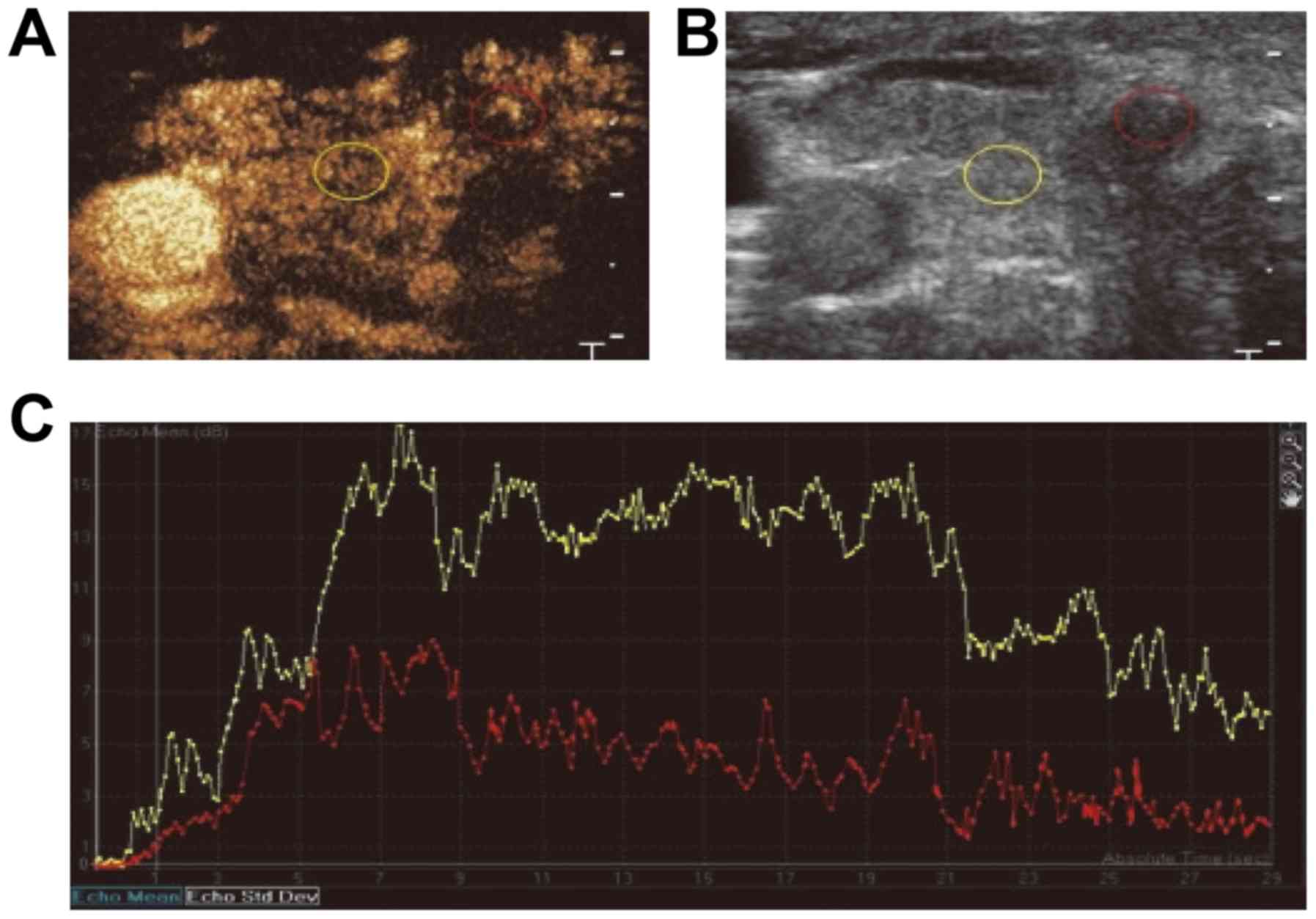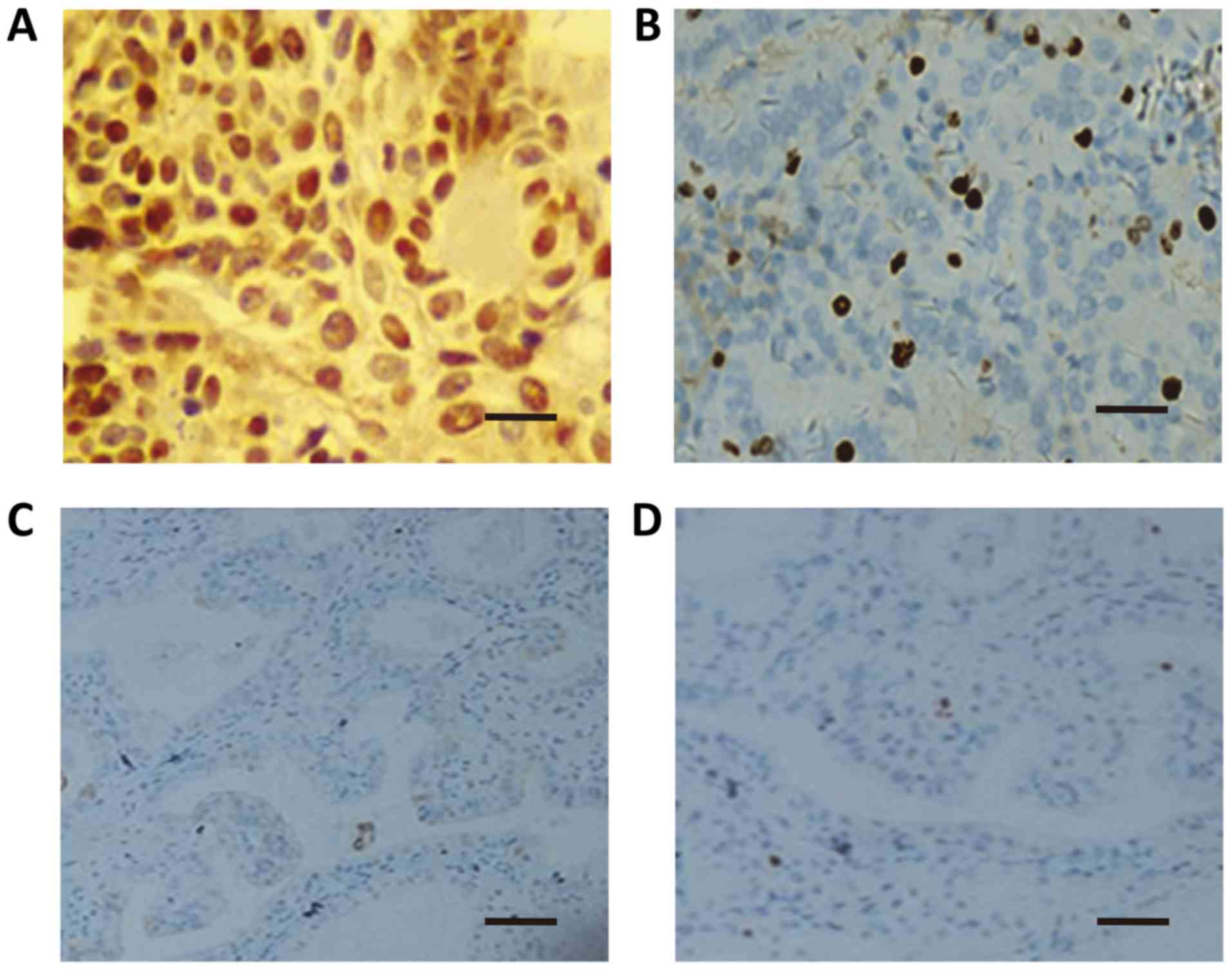|
1
|
He C, Zhang J and Xing Y: Research
progress in diagnosis and treatment of papillary thyroid carcinoma.
Modern Diagnosis Treat. 17:290–292. 2006.(In Chinese).
|
|
2
|
Fu D, Zhu Y, Shao W, et al: Clinical
analysis of 124 cases of papillary microcarcinoma. Chin J Curr Adv
Gen Surg. 16:157–158. 2013.(In Chinese).
|
|
3
|
Sun P and Liang D: Effects of
ultrasound-guided radiofrequency ablation and postoperative stress
on thyroid micropapillary carcinoma. Chin J Curr Adv Gen Surg.
21:217–222. 2018.
|
|
4
|
Zhou Q and Jiang Z: Value of
Contrast-enhanced ultrasound in diagnosis of thyroid papillary
carcinoma. Chin J Ultrasound Med. 27:595–597. 2011.
|
|
5
|
Wang F, Chen M, Huang Y, Gao Y, Qiu Y,
Wang B and Chang C: Ultrasonograpbic characteristics of thyroid
carcinoma and analysis of the misdiagnosed cases. Chin J
Ultrasonography. 19:134–137. 2010.(In Chinese).
|
|
6
|
Gao X and Zhang Y, Sun Y and Zhang Y:
Clinical efficacy and adverse reaction analysis of laparoscopic
surgery for colon; cancer. Chin J Curr Adv Gen Surg. 18:738–740.
2015.(In Chinese).
|
|
7
|
Liu F, Xia Q, Qiu J, et al: Expression and
clinical significance of C-myb and P53 in papillary thyroid
carcinoma. J Oncol. 21:320–324. 2015.
|
|
8
|
Dong L, Peng T, Liu N, Shuang L and Xudong
S: Expression and clinical significance of ER, PR and Her2/neu in
papillary thyroid carcinoma. J Modern Oncol. 23:3576–3579.
2015.
|
|
9
|
Jiang WF, Wang YX and Cheng M: Expression
and relationship of XIAP, P53 and Ki67 in papillary thyroid
carcinoma. Beijing Med J. 34:971–974. 2012.(In Chinese).
|
|
10
|
Tang X, Cui D, Chi J, Wang Z, Wang T, Zhai
B and Li P: Evaluation of the safety and efficacy of radiofrequency
ablation for treating benign thyroid nodules. J Cancer. 8:754–760.
2017.PubMed/NCBI View Article : Google Scholar
|
|
11
|
Zhang L, Dong Y, Hu S, et al: The impact
of American Cancer Joint Committee Revised Thyroid Cancer Staging
System (8th edition) on staging of papillary thyroid carcinoma.
Chin Oncol. 7:491–496. 2018.(In Chinese). PubMed/NCBI View Article : Google Scholar
|
|
12
|
Song J, Yang Z and Wang HM: Domestic
progress in the diagnosis of differentiated thyroid carcinoma.
World Latest Med Infor. 18:64–65. 2016.(In Chinese).
|
|
13
|
Xhaard C, Rubino C, Cléro E, Maillard S,
Ren Y, Borson-Chazot F, Sassolas G, Schvartz C, Colonna M, Lacour
B, et al: Menstrual and reproductive factors in the risk of
differentiated thyroid carcinoma in young women in France: A
population-based case-control study. Am J Epidemiol. 180:1007–1017.
2014.PubMed/NCBI View Article : Google Scholar
|
|
14
|
Tafani M, De Santis E, Coppola L, Perrone
GA, Carnevale I, Russo A, Pucci B, Carpi A, Bizzarri M and Russo
MA: Biodging hypoxin, inflammation and estrogen receptors in the
thyroid cancer progression. Biomed Pharmacother. 68:1–5.
2014.PubMed/NCBI View Article : Google Scholar
|
|
15
|
Chen X and Zhao B: Contrast-enhanced
ultrasound in diagnosis and treatment of liver diseases. Chin J Med
Imaging Technol. 21:484–487. 2005.
|
|
16
|
Du L and Li F: Application of
contrast-enhanced ultrasound in the diagnosis of renal occupied
lesions. Chin J Ultrasonography. 15:813–815. 2006.
|
|
17
|
Wang L and Yang W: Expression and clinical
significance of p53, C-myc and CerbB-2 in papillary thyroid
carcinoma. Chongqing Med. 45:77–80. 2016.
|
|
18
|
Wang YQ and Qiu XG: Expressions of p53,
RUNX3 and Ki67 proteins in papillary thyroid carcinoma and clinical
significance. Clin Med. 33:3–4. 2013.
|
|
19
|
de Azambuja E and Cardoso F: Ki-67 as
prognostic marker in early breast cancer: A meta-analysis of
published studies involving 12, 155 patients. Br J Cancer.
96:1504–1513. 2007.PubMed/NCBI View Article : Google Scholar
|
|
20
|
Viale G, Regan MM, Mastropasqua MG,
Maffini F, Maiorano E, Colleoni M, Price KN, Golouh R, Perin T,
Brown RW, et al: Predictive value of tumor Ki-67 expression in two
randomized trials of adjuvant chemoendocrine therapy for
Node-negative breast cancer. J Natl Cancer Inst. 100:207–212.
2008.PubMed/NCBI View Article : Google Scholar
|
|
21
|
Yeh CC, Lin JT, Jeng LB, Charalampos I,
Chen TT, Lee TY, Wu MS, Kuo KN, Liu YY and Wu CY: Hepatic resection
for hepatocellular carcinoma patients on hemodialysis for Uremia: A
nationwide cohort study. World J Surg. 37:2402–2409.
2013.PubMed/NCBI View Article : Google Scholar
|
|
22
|
Argalia G, De Bernardis S, Mariani D,
Abbattista T, Taccaliti A, Ricciardelli L, Faragona S, Gusella PM
and Giuseppetti GM: Ultrasonographic contrast agent: Evaluation of
time-intensity curves in the characterisation of solitary thyroid
nodules. Radiol Med. 103:407–13. 2002.(In English, Italian).
PubMed/NCBI
|
|
23
|
Shi X, Zheng X, Guo H, Li C, Peng M, Zhou
G, Jiang Y, Yan S and Yu Y: Contrast analysis on contrast-enhanced
ultrasonography and pathology of thyroid lumps. Zhejiang Practical
Med. 12:87–88. 2007.(In Chinese).
|
|
24
|
Bartolotta TV, Midiri M, Galia M, Runza G,
Attard M, Savoia G, Lagalla R and Cardinale AE: Qualitative and
quantitative evaluation of solitary thyroid nodules with
contrast-enhanced ultrasound: Initial results. Eur Radiol.
16:2234–2241. 2006.PubMed/NCBI View Article : Google Scholar
|
|
25
|
Chen Q: Diagnostic value of high frequency
ultrasound in benign and malignant thyroid nodules. Chin Imaging J
Integrated Traditional Western Med. 10:545–546. 2012.
|
|
26
|
Zhao L, Lin J, Shi B, et al: Expression of
P53, Ki67, galectin-3, HBME-1, 34βE12 and CK19 in papillary thyroid
carcinoma and its clinicopathological significance. Basic Clin Med.
32:1202–1206. 2012.
|
|
27
|
Huang H: Expression of CK19, Ki67 and VEGF
and their clinical significances in papillary thyroid carcinoma. J
Nanchang Univ (Med Sci). 50:24–27. 2010.
|
|
28
|
Jia W and Yin C: Expressions of p53, Her-2
and Ki67 in thyroid papillary carcinoma and their clinical
significance. China J Modern Med. 28:33–37. 2018.
|

















